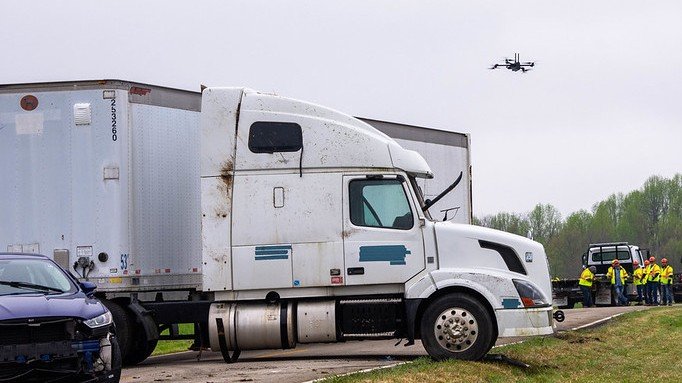Ohio’s most recent operating budget, which took effect July 1, 2025, created a Drones for First Responders Pilot Program to support the use of drones by law enforcement, fire departments, and emergency medical services. Drones as First Responders programs utilize pre-positioned or immediately dispatchable drones to reach emergency scenes before ground units, providing real-time situational awareness via live video feeds. This helps responders make informed decisions and improves efficiency and outcomes.

Search and Rescue: Drones can fly in hazardous situations, including environments that are potentially flammable, confined spaces, and areas with difficult terrain. Drones can also cover large areas in a shorter amount of time than traditional methods.
Crash Response: Drone footage can convey crash severity, potential hazards, and impact to traffic immediately following an incident. An overhead view of the crash can inform crews of the quickest route to the scene, where to block roadways, and where to divert traffic to safely navigate around the crash.
Public Safety Incident Response: Drones can provide real-time visual information to enhance situational awareness. Some drones are also equipped with two-way communication for crisis negotiations.
Medical Supplies Delivery: Drones can be used to drop automated external defibrillators (AEDs) and other critical supplies like Narcan, EpiPens, and tourniquets to the scene of an emergency.
Natural Disaster Response: Drone footage can provide crews an aerial view to assess damage after natural disasters like a tornado or flood and plan recovery efforts on the ground.
ODOT is in the process of developing program requirements, evaluation metrics, and equipment specifications. We expect to begin accepting applications in November. Selected participants can use funds to purchase drone systems, for training support for drone operators, and for assistance with federal processes and approvals.
Learn more: DriveOhio


